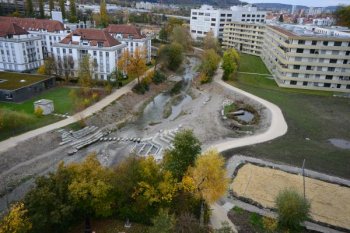Wetland restoration to mitigate diffuse water pollution entering Rostherne Mere, Cheshire, UK
Submitted by Lorna Drake on 3 May 2022This project aimed to utilise nature-based solutions to restore wetland habitat at Rostherne Mere, delivering water quality improvements via reduced nutrient loads entering the mere, alongside wider environmental benefits through a habitat that can support a range of species and ecosystem services




